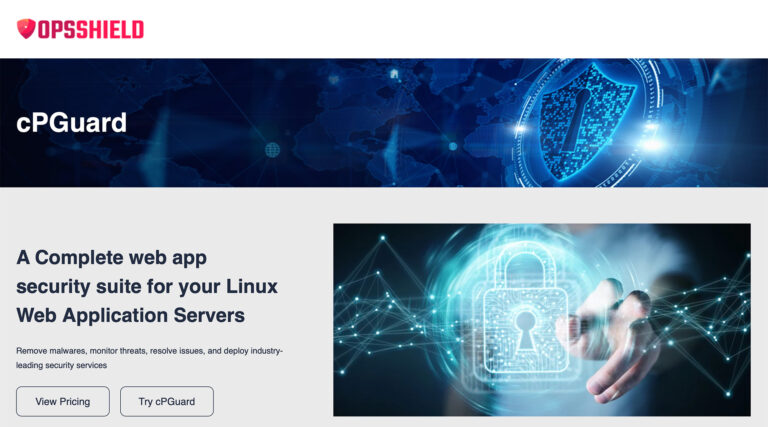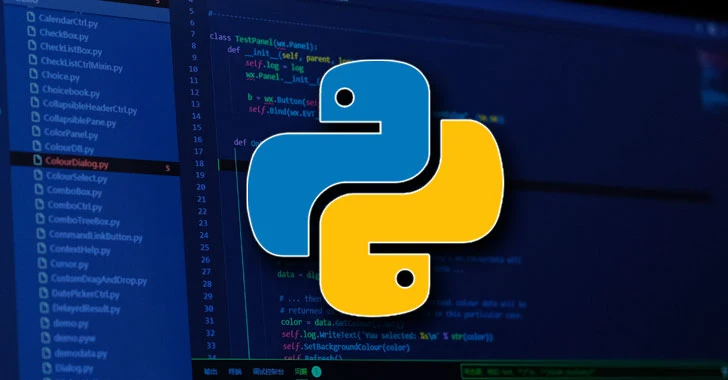Privilege escalation is a critical concept in cybersecurity, wherein attackers obtain elevated access to systems, often resulting in significant security breaches.
This discussion will explore the role of SUID (Set User ID) binaries in privilege escalation, emphasizing how these seemingly benign files can serve as gateways for unauthorized access.
It is important to understand the common tactics employed by attackers, including the exploitation of vulnerable binaries and the manipulation of file permissions.
Additionally, effective strategies for preventing these vulnerabilities will be examined to ensure the security of systems.
This discourse aims to uncover essential insights that can aid in strengthening defenses against privilege escalation threats.
Understanding Privilege Escalation
Table of Contents
- 1 Understanding Privilege Escalation
- 2 SUID Binaries and their Role in Privilege Escalation
- 3 Common Techniques for Privilege Escalation using SUID Binaries
- 4 Preventing Privilege Escalation with SUID Binaries
- 5 Frequently Asked Questions
- 5.1 What are privilege escalation techniques with SUID and setuid/setgid binaries?
- 5.2 How do SUID binaries work?
- 5.3 What are some common SUID binaries used for privilege escalation?
- 5.4 What are some exploit techniques for exploiting SUID binaries for privilege escalation?
- 5.5 How can I protect against privilege escalation with SUID binaries?
- 5.6 What are some best practices for managing SUID and setgid binaries?
Privilege escalation is a vital concept within the field of cybersecurity, particularly concerning Linux and UNIX operating systems. Attackers often exploit configuration weaknesses and vulnerabilities to attain elevated privileges, which can result in unauthorized modifications of sensitive data and systems.
This escalation can occur through various methods, including the manipulation of user accounts, weak password practices, and ineffective access control measures.
Consequently, it is imperative for system administrators to establish robust security policies and continuously monitor for potential threats.
What is Privilege Escalation?
Privilege escalation refers to the process of exploiting security vulnerabilities to obtain higher levels of access to systems or data than initially granted.
This process can manifest in various ways and is primarily categorized into horizontal and vertical escalation. Horizontal escalation occurs when a user gains access to the privileges of another user at the same level, often resulting in unauthorized access to sensitive information without necessarily elevating their own permission level. In contrast, vertical escalation involves obtaining higher administrative privileges, enabling a user to manipulate system settings or access secured files.
For example, in a Linux environment, a common scenario involves the exploitation of a misconfigured SUID (Set User ID) binary, which permits a non-privileged user to execute it with root privileges. This oversight can lead to significant security breaches, allowing an attacker to compromise system integrity and access sensitive data, thus posing severe risks to organizational security.
SUID Binaries and their Role in Privilege Escalation
SUID (Set User ID) binaries are critical in the context of privilege escalation within Linux systems. They enable users to execute files with the permissions of the file owner, which is typically the root user.
This functionality can introduce significant security vulnerabilities if not managed appropriately. Therefore, it is essential for system administrators to conduct a thorough evaluation of SUID binaries and their associated file permissions. By doing so, they can effectively mitigate the risks posed by malicious programs that may exploit these binaries for unauthorized access.
Explaining SUID Binaries
SUID binaries in Linux are executable files that, when executed, allow users to run them with the privileges of the file owner, typically the root user. This functionality grants elevated permissions necessary to perform specific tasks.
Such capabilities enable regular users to execute actions that usually require higher privileges, including changing user passwords or accessing critical system settings. However, the existence of SUID binaries also raises significant security concerns, as malicious actors may exploit these elevated permissions to gain unauthorized access or execute harmful commands.
Common examples of SUID binaries include:
- “passwd,” which enables users to change passwords,
- “ping,” which necessitates elevated privileges to send ICMP packets.
Potential misuses may involve the injection of malicious code to gain root access.
To mitigate these risks, system administrators should implement strategies such as judicious use of the ‘setuid’ flag, conducting regular binary analyses, and employing access controls to ensure that SUID binaries are accessible only to trusted users.
Common Techniques for Privilege Escalation using SUID Binaries
Privilege escalation techniques that exploit SUID binaries represent one of the most prevalent methods employed by attackers to gain unauthorized access and manipulate systems.
These tactics encompass a variety of approaches, including the abuse of file permissions, the exploitation of flawed binaries, and the manipulation of environment variables.
Such actions ultimately enable attackers to execute commands with elevated privileges, thereby compromising the overall security of the system.
Exploiting Vulnerable Binaries
Exploiting vulnerable binaries is a widely recognized technique employed in privilege escalation, wherein attackers identify and exploit flaws in SUID binaries to gain unauthorized access and elevated privileges within Linux systems.
This process typically entails scanning for binaries with the SUID bit set, which permits users to execute the binary with the privileges of the file owner, often the root user. Attackers frequently utilize tools such as the ‘find’ and ‘grep’ commands to locate these binaries, followed by analyzing them with debuggers and binary analysis software to identify vulnerabilities.
Notable instances have demonstrated that inadequately coded applications can enable attackers to execute arbitrary commands or escalate their privileges.
To mitigate these risks, it is imperative for system administrators to conduct regular audits of system binaries, apply security patches in a timely manner, and implement stringent access controls to limit the execution privileges of sensitive applications.
Abusing File Permissions
Abusing file permissions represents a significant vector for privilege escalation, where attackers exploit file permissions associated with SUID binaries to attain elevated privileges and execute unauthorized commands.
Misconfigurations may occur when system administrators inadvertently assign excessive permissions to executables or sensitive files, thereby allowing non-privileged users to access or modify them.
For example, if a binary with the SUID bit set is writable by any user, a malicious actor could substitute that binary with their own version, thereby enabling them to execute commands with elevated privileges. This scenario illustrates how a seemingly minor oversight in file permission settings can be exploited to compromise system security.
To mitigate these risks, best practices include conducting regular audits of file permissions, adhering to the principle of least privilege, and utilizing access control lists (ACLs) to meticulously tailor permissions to only those users or groups that genuinely require them.
Manipulating Environment Variables
Manipulating environment variables is a technique that attackers may employ for privilege escalation, wherein they modify environment settings to execute commands or scripts with elevated privileges, often circumventing standard security measures.
This manipulation can take place in various contexts, including during application runtime or when initiating system services. Attackers may set or adjust environment variables to influence the behavior of applications, thereby enabling them to execute unauthorized code or access sensitive information.
For example, altering the PATH variable can redirect command execution to a malicious script. By exploiting temporary environment variables created during system processes, an attacker could inject harmful commands into scripts.
To mitigate these risks, it is essential for administrators to conduct regular audits of environment configurations, implement secure coding practices, and restrict user permissions to minimize the potential impact of such vulnerabilities.
Preventing Privilege Escalation with SUID Binaries
Preventing privilege escalation through SUID binaries is essential for maintaining the integrity and security of Linux systems.
By implementing best practices, conducting regular audits, and applying security patches, system administrators can effectively mitigate the risks associated with vulnerable binaries and unauthorized access.
This proactive approach ensures that sensitive data remains safeguarded against malicious programs and exploit techniques.
Best Practices for Securing SUID Binaries
Best practices for securing Set User ID (SUID) binaries include a mix of effective file permissions management, adherence to established security policies, and regular monitoring of binary usage to prevent unauthorized access.
By implementing stringent file permission settings, administrators can limit the execution of SUID binaries to only those users who require it, thereby minimizing the attack surface. The utilization of monitoring tools facilitates the tracking of any unusual access patterns or modifications to these binaries, enabling prompt response actions to potential exploits.
Additionally, a well-defined security policy is essential for educating users about the risks associated with SUID binaries. This policy should encourage best practices such as avoiding unnecessary usage of these binaries and conducting regular audits to identify vulnerabilities within the system.
Together, these strategies establish a robust defense against privilege escalation attempts.
Regular Auditing and Patching
Regular auditing and patching are critical practices in the prevention of privilege escalation, ensuring that any vulnerabilities associated with SUID and SGID binaries are identified and addressed promptly to protect Linux systems from unauthorized access.
By systematically reviewing system configurations and permissions, organizations can identify areas that may be vulnerable to attacks, such as configuration weaknesses and weak passwords. The use of automated tools such as vulnerability scanners can facilitate this auditing process, while adhering to a regular schedule for software updates and security patches is essential for mitigating security gaps.
The integration of robust monitoring and logging tools, such as Logstash and Splunk, enables real-time analysis of system activity, allowing administrators to swiftly identify unusual behavior or potential threats, including unauthorized modifications and malicious programs. Collectively, these methods constitute a comprehensive security strategy that not only strengthens systems against exploitation but also promotes a proactive approach to safeguarding sensitive data.
Frequently Asked Questions
What are privilege escalation techniques with SUID and setuid/setgid binaries?
Privilege escalation techniques with SUID binaries refer to methods used to gain elevated access or permissions on a system by exploiting the Set User ID (SUID) bit on certain executable files, often involving scripting and exploitation of vulnerabilities.
How do SUID binaries work?
SUID binaries allow a user to temporarily gain elevated privileges when executing a program, even if they do not have the necessary permissions. This is achieved by changing the user ID of the executing process to that of the file owner, who may have higher privileges.
What are some common SUID binaries used for privilege escalation?
Some commonly used SUID binaries for privilege escalation include passwd, su, and sudo, as well as other system utilities and administrative tools.
What are some exploit techniques for exploiting SUID binaries for privilege escalation?
Some techniques for exploiting SUID binaries include manipulating environment variables, modifying the binary itself, using shell escape sequences to execute arbitrary commands, and leveraging exploit techniques like Dirty c0w and Full Nelson.
How can I protect against privilege escalation with SUID binaries?
To protect against privilege escalation with SUID binaries, it is important to regularly review and limit the number of SUID files on a system, ensure they are being used for their intended purpose, and carefully manage and restrict user access to these files.
What are some best practices for managing SUID and setgid binaries?
Some best practices for managing SUID and setgid binaries include regularly updating and patching vulnerable software, restricting file permissions and ownership, enforcing strict access control policies, and regularly monitoring and auditing SUID files for any suspicious or unusual activity using tools like LinEnum and LinPEAS.





